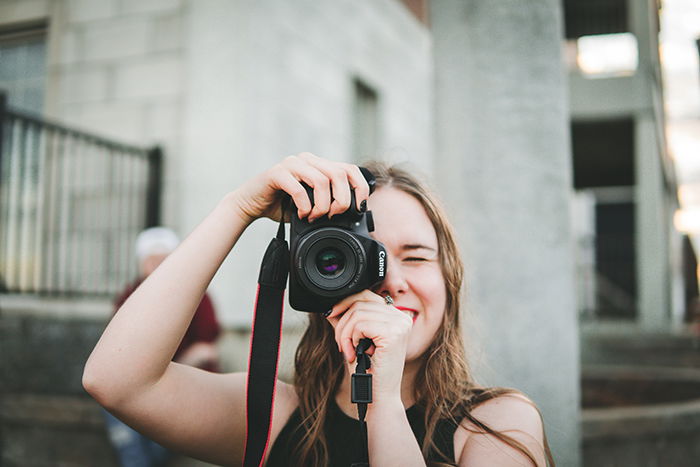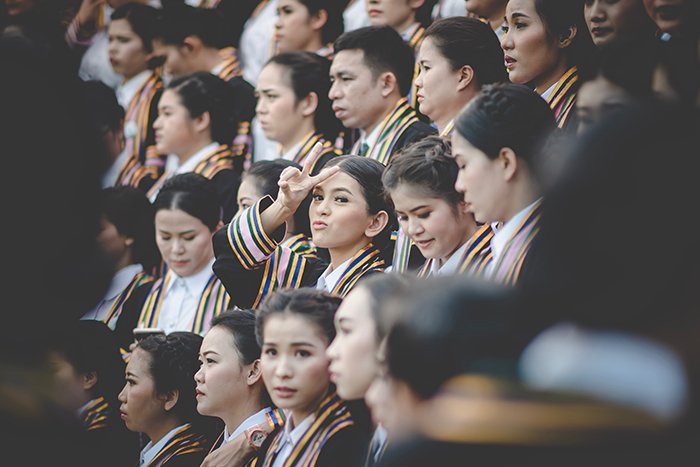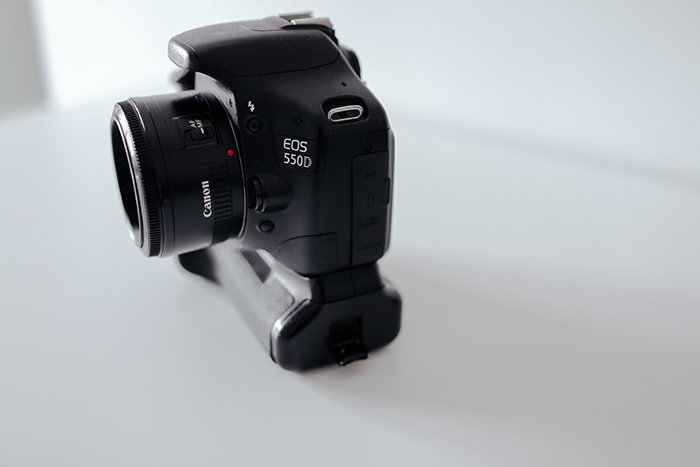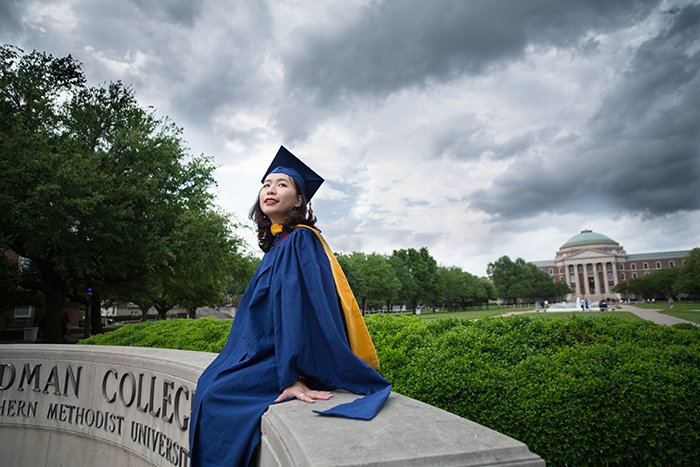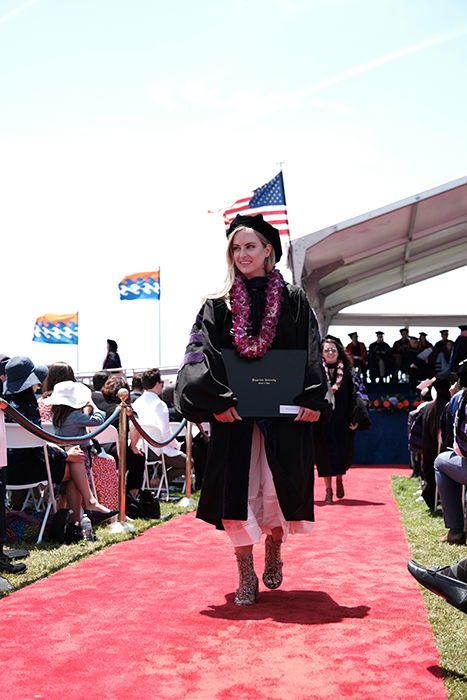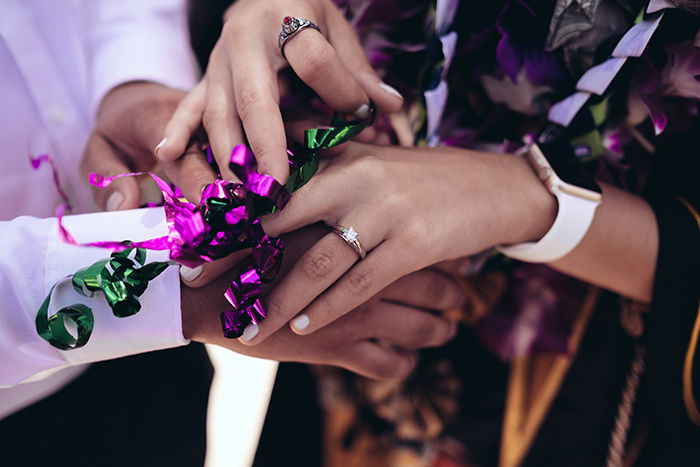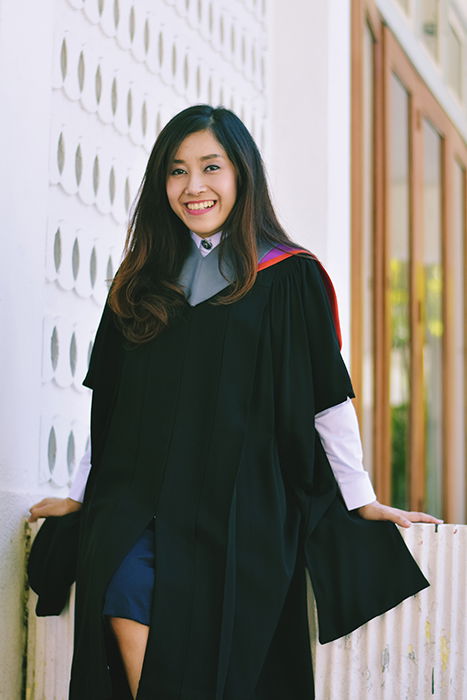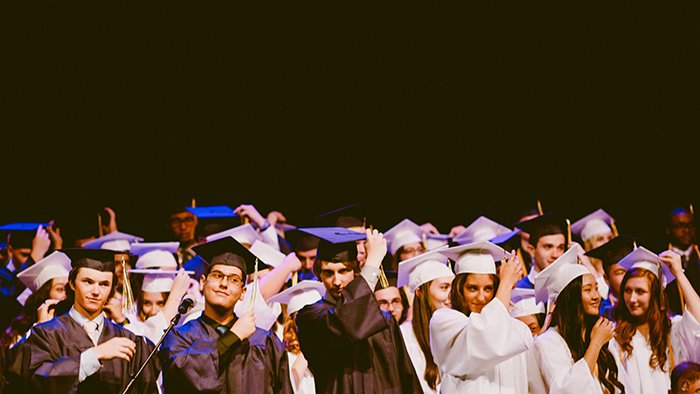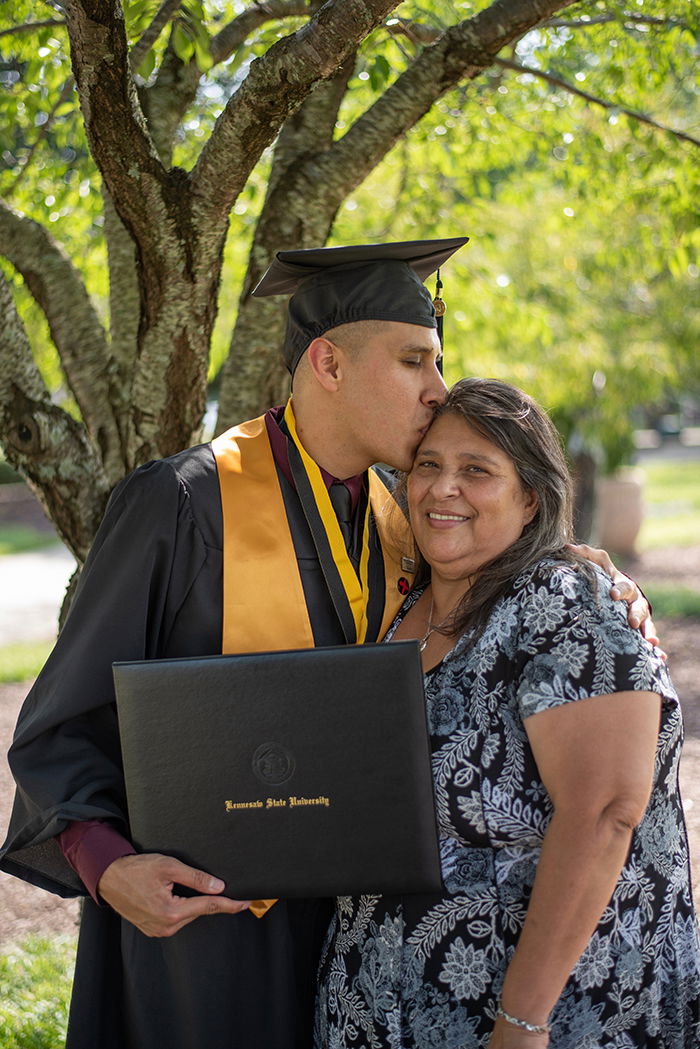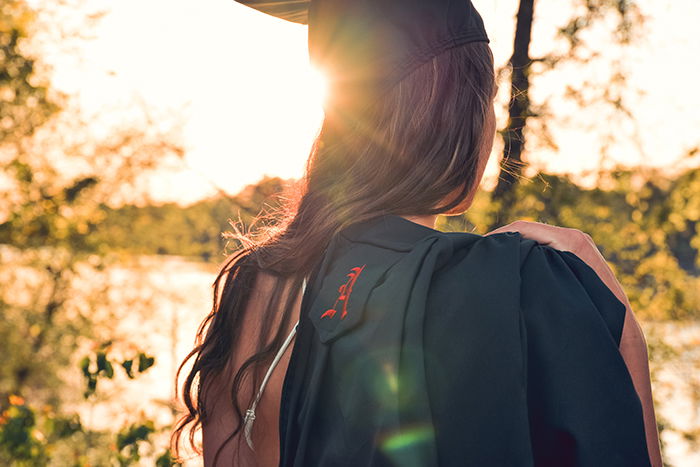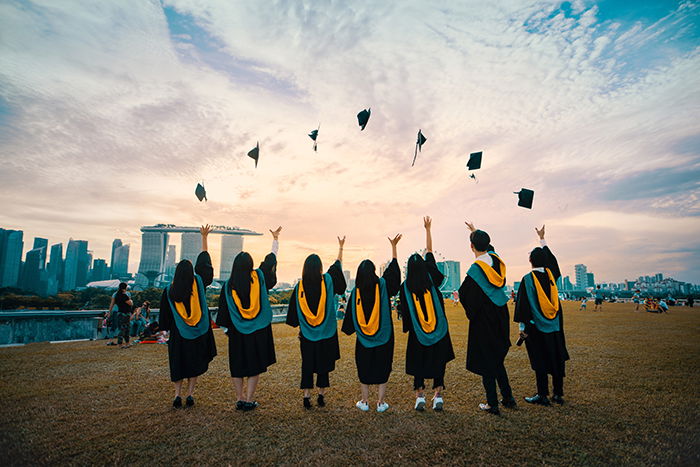To take great graduation pictures, you need to be aware of a few lighting, camera, and communication tricks. So read on to find out exactly what they are.
Use a High-Quality Camera for High-Quality Graduation Photography
Today’s smartphones offer advanced camera settings. But they can’t compete with professional cameras. A professional camera will let you take photos in any lighting situation. You won’t risk getting blurry or unflattering results.
Use a Large Aperture for Flattering Graduation Pictures
The larger your aperture, the blurrier your background and foreground. This means that you’ll be able to focus on one subject in a crowd. And you won’t end up with busy compositions. A large aperture—like f/1.8—will separate your focus from everything around it. For example, if the photo above were sharper, the student in the middle wouldn’t stand out as much. Don’t forget to change your aperture throughout the graduation ceremony. As you’ll see later in this article, you’ll need to photograph both details and atmosphere. That’s the key to a successful photoshoot.
Bring Extra Equipment Just in Case
If the graduation ceremony is going to last a few hours, you need to come prepared. Bring extra batteries, lenses, and memory cards so you don’t miss any of the action. You can invest in a battery grip (an extension that holds two batteries). That way you don’t have to spend time on replacing batteries.
Take Photos of the Venue Beforehand to Get Comfortable with the Lighting
If possible, take photos of the venue so you know what to expect during the actual ceremony. This can help you prepare for potential lighting challenges. It’s also useful in finding the best angles, and figuring out what equipment you’ll need later on. If you can’t get in, you can look at photos of the venue instead. Take Atmospheric Photos of Students in Front of Their University This works whether you’re photographing a preschooler or a young adult with a proper degree. It’s important to take at least one photo of their school. To make your photos even more interesting, ask your model to pose in their favorite place. Personal photos like this will make it easy for them to remember the best parts of their life as a student. Use a wide-angle lens to capture as much of their surroundings as possible. If you want the background to be visible, use a small aperture like f/22.
Use Burst Mode to Catch Unexpected Moments
Burst mode is every graduation photographer’s best friend. This mode is available in most professional cameras. All you have to do is hold the shutter while your camera takes a series of photos. This is a great way to catch unexpected and natural moments. You can use burst mode while students walk, get their degrees, socialize in a crowd, and toss their hats.
Take Photos of Details That Most People Forget
It’s easy to get overwhelmed during a busy event. Especially if you’re about to graduate. It’s likely that your student won’t be paying attention to small details like accessories and candid reactions. It’s your responsibility to freeze these invaluable moments in time. When you’re not documenting important moments, focus on details. Photograph your subject hugging their loved ones, interacting with their friends, or having fun at a party. For these moments to be as candid as possible, use a zoom lens. This will create enough space for your model to feel comfortable. And for you to capture everything in high quality.
Take Post-Graduation Portraits to Diversify Your Results
Once the ceremony is over, take a few simple portraits of your model. This will ensure that you have a variety of exciting graduation pictures to give them at the end of your photoshoot. Take photographs in different locations and with different people. This will impress your model. And give you a chance to challenge yourself in new ways. It will also give you many more flattering and interesting photos to choose from.
Use a Large ISO to Take Sharp Indoor Photos
Graduation ceremonies all have different lighting. They are often not ideal for professional photoshoots. It’s your job to adjust to any kind of lighting without compromising the quality of your work. This is why using a professional camera is so important. Manually adjust your white balance, ISO, and aperture to take sharp and beautiful photos. One of the most important of these is ISO. This will allow you to take high-quality photos in low light. Don’t be afraid of taking overly grainy photos with a high ISO. As long as the ISO number isn’t so high your sensor can’t copy. This will be different for every camera. Use your past experience to guide you. You can also manually remove grain during the editing process later on.
Photograph Students With Their Friends and Family
Friends and family members are an invaluable part of graduation ceremonies. To avoid awkwardness, take family photos once all the excitement has died down. Find a peaceful and well-lit place where you can take photos without rushing or bumping into people. Great places for photoshoots like this are in shaded areas, in fields, and in front of universities. Avoid taking photos at midday unless there’s a shaded area where your models can hide from the harsh light.
Use a Silent Shutter in Small Ceremonies to Avoid Disruption
Small, intimate ceremonies are significantly quieter than bigger ones. It’s important to be as invisible as possible. Too much camera clicking might make everyone feel uncomfortable. Especially if the ceremony is for younger children. Instead of not bringing a camera at all, you can use a silent shutter.
Photograph Everyone Tossing Their Hats
Hat tossing happens at almost every graduation ceremony. This is a great opportunity to take creative photos. And you’ll get to work on your editing skills. To take a photo like the one above, you need to take a series of hat-toss photos at different heights. Have your models throw their hats close to their faces, far away, and very far away. Make sure you stand in the same position and that your models don’t move around too much. You’ll have trouble creating a realistic result otherwise. You can then merge these photos in an editing program to create different curves or shapes.
Conclusion
Graduations provide students with irreplaceable memories. And great graduation photography ensures those memories can be revisited for a lifetime. All the joy, anticipation, and pride deserve to be photographed in the best light. This is a great opportunity for you to improve multiple photography skills and get more comfortable with shooting during busy events. To take your portrait photography to the next level, check out our Profit from Portraits ebook!


